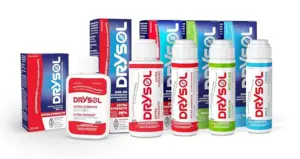
Dark spots, uneven skin tone, and hyperpigmentation can be frustrating skin issues that affect many people. These skin concerns can impact self-esteem and confidence, prompting individuals to seek effective treatments. Hydroquinone cream is a popular solution for addressing these issues, but using it correctly is crucial for achieving the best results. This article will guide you through the best practices for applying hydroquinone cream, helping you use this dark spot remover effectively and safely.
Understanding Hydroquinone Cream
Hydroquinone is a skin-lightening agent commonly found in creams that treat hyperpigmentation. It works by reducing the production of melanin, the pigment responsible for skin color. By inhibiting the enzyme tyrosinase, which is crucial in melanin synthesis, hydroquinone effectively lightens dark spots and evens out skin tone when used correctly.
This compound has been a staple in dermatology for decades due to its efficacy. However, understanding how hydroquinone works and the science behind it is vital for anyone considering its use. Knowing its function can help users appreciate its role in dermatological treatments and encourage adherence to guidelines for optimal results.
Benefits of Hydroquinone Cream
- Reduces Dark Spots: Hydroquinone cream specifically targets areas of hyperpigmentation, making them less visible over time. This reduction in dark spots can significantly enhance the appearance of one’s skin, contributing to a more youthful and radiant look.
- Evens Skin Tone: By lightening dark spots, hydroquinone helps create a more uniform complexion. Achieving an even skin tone can be transformative, improving the overall texture and appearance of the skin and boosting confidence.
- Versatile Treatment: It can be used on various parts of the body affected by hyperpigmentation, such as the face, neck, and hands. This versatility makes it a convenient option for those dealing with pigmentation issues in multiple areas, allowing for a comprehensive approach to skin lightening.
Preparing Your Skin for Hydroquinone Cream

Before applying hydroquinone cream, it is essential to prepare your skin properly. This preparation ensures that the cream works effectively and minimizes the risk of irritation. Proper skin preparation is the foundation of any skincare routine, especially when incorporating active ingredients like hydroquinone.
Perform a Patch Test
Before using hydroquinone cream on a larger area, perform a patch test. Apply a small amount of cream on a discreet area of your skin and wait for 24 hours. If you experience any adverse reactions, such as redness or itching, avoid using the product and consult a dermatologist. This step is crucial because it helps identify potential allergies or sensitivities early, preventing widespread irritation or adverse reactions.
Patch testing is a simple yet effective way to ensure that the treatment is suitable for your skin type. It provides an opportunity to observe how your skin reacts to the cream, allowing you to make informed decisions about its usage. Consulting a dermatologist if reactions occur can also provide alternative solutions tailored to your specific needs.
Cleanse Your Skin
Start by washing your face with a gentle cleanser to remove dirt, oil, and makeup. This step ensures that your skin is clean and ready to absorb the cream. Pat your skin dry with a soft towel, avoiding harsh rubbing, as this can irritate the skin and reduce the cream’s effectiveness.
Cleansing is a vital step in any skincare regimen, as it prepares the skin to receive treatment. A clean surface allows for better absorption of active ingredients, maximizing the cream’s benefits. Opting for a gentle cleanser helps maintain the skin’s natural barrier, preventing unnecessary irritation.
Avoid Sun Exposure
Hydroquinone can make your skin more sensitive to sunlight. To prevent further pigmentation, limit sun exposure and apply sunscreen with a high SPF during the day. Sunscreen acts as a protective barrier, shielding your skin from harmful UV rays and preventing new pigmentation from forming.
It’s advisable to incorporate sun protection into your daily routine, even on cloudy days, to maintain the effectiveness of hydroquinone treatment. Wearing protective clothing, such as hats and sunglasses, can also help reduce sun exposure and protect your skin.
How to Apply Hydroquinone Cream
Proper application of hydroquinone cream is vital for its effectiveness. Follow these steps to ensure you get the most out of your treatment. Understanding the correct application techniques can enhance the cream’s efficacy and reduce the likelihood of side effects.
Apply a Thin Layer
Using clean fingertips, apply a thin layer of hydroquinone cream directly to the affected areas. Be careful not to apply it to the surrounding skin to prevent unwanted lightening. A thin layer ensures that the cream is absorbed evenly, targeting the hyperpigmented spots efficiently.
Applying just the right amount of product is crucial, as over-application can lead to irritation. Ensuring that your fingertips are clean before application prevents the introduction of bacteria to your skin, maintaining hygiene and promoting better results.
Use Sparingly
Less is more when it comes to hydroquinone cream. Overusing the product can lead to irritation and even make your hyperpigmentation worse. Using it sparingly helps prevent adverse reactions and allows your skin to adjust to the treatment gradually.
Being mindful of the amount used promotes the cream’s long-term efficacy. It’s important to follow the product’s instructions or your dermatologist’s recommendations to avoid overuse and potential skin damage.
Nighttime Application
Apply hydroquinone cream at night, as it is more effective when not exposed to sunlight. This also allows your skin to recover overnight. The skin’s natural repair processes are heightened during sleep, making nighttime an ideal period for applying treatments like hydroquinone.
Nighttime application minimizes the risk of UV-induced degradation of the cream, preserving its potency. Establishing a consistent nightly routine can enhance the cream’s benefits and integrate seamlessly into your overall skincare regimen.
Moisturize
After the cream has been absorbed, follow up with a gentle moisturizer to keep your skin hydrated. Moisturizing helps maintain the skin’s barrier function, reducing the likelihood of irritation caused by hydroquinone.
Choosing a moisturizer that complements your skin type can further enhance the cream’s effects. Hydrated skin is healthier and more resilient, aiding in the overall success of your pigmentation treatment.
Monitoring Your Progress

by Karina Karina (https://unsplash.com/@dist0rt1on)
Regularly monitoring your progress is important to ensure the treatment is working and to avoid potential side effects. Keeping track of changes in your skin allows for timely adjustments and enhances treatment outcomes.
Look for Changes
Observe any changes in your skin tone and dark spots. It may take several weeks to see noticeable results, so be patient and consistent with your application. Documenting your skin’s progress through photos or notes can provide valuable insights into the treatment’s effectiveness.
Patience is key when using hydroquinone, as it gradually lightens pigmentation. Consistent observation helps identify improvements and areas that may require additional attention or alternative treatments.
Be Alert to Side Effects
Watch for signs of irritation, such as redness, itching, or peeling. If these occur, reduce the frequency of application or stop using the product and consult a dermatologist. Being vigilant about side effects ensures that your skin remains healthy throughout the treatment process.
Addressing side effects promptly can prevent further complications and protect your skin’s integrity. Dermatological guidance can offer solutions tailored to your needs, maintaining the treatment’s benefits while minimizing discomfort.
Adjust Your Routine
If you notice that your skin is becoming too light, reduce the frequency of use or take a break from the cream. Your dermatologist can provide guidance on how to adjust your routine. Tailoring your regimen to your skin’s response is crucial for achieving balanced and natural-looking results.
Routine adjustments based on your skin’s needs help maintain a harmonious complexion. A dermatologist’s expertise can provide personalized recommendations, ensuring your skin’s health and enhancing the treatment’s success.
When to Consult a Dermatologist
Hydroquinone cream is generally safe for most people, but some individuals may experience adverse reactions. Here are some situations where you should consult a dermatologist:
- Persistent irritation or allergic reactions: If you experience ongoing discomfort, a dermatologist can help determine the cause and suggest alternatives.
- No improvement after several months of use: Lack of progress may indicate the need for a different treatment approach or formulation.
- Concerns about long-term use or safety: Professional advice can address questions about hydroquinone’s safety and provide reassurance or alternatives.
Consulting a dermatologist ensures that your skin receives the best possible care and treatment. Their expertise can guide you toward effective solutions tailored to your unique skin needs, maximizing treatment success and safety.
Alternatives to Hydroquinone Cream
If hydroquinone cream is not suitable for your skin, consider other treatments for hyperpigmentation:
- Kojic Acid: A natural alternative that can lighten skin by inhibiting melanin production. Derived from fungi, kojic acid offers a gentler option for those with sensitive skin.
- Vitamin C: Known for its brightening properties, Vitamin C serums can reduce the appearance of dark spots. This powerful antioxidant also promotes collagen production, enhancing skin texture.
- Retinoids: These compounds can improve skin cell turnover and reduce pigmentation over time. Retinoids are well-known for their anti-aging benefits, making them a versatile addition to skincare routines.
Exploring alternatives to hydroquinone provides options for individuals with different skin types and concerns. Each alternative offers unique benefits, allowing for a customized approach to treating hyperpigmentation.
Conclusion
Hydroquinone cream can be an effective hyperpigmentation treatment when used correctly. By following these best practices, you can safely lighten dark spots and achieve a more even skin tone. Remember to perform a patch test, apply the cream correctly, and monitor your progress. If in doubt, consult a dermatologist to find the best treatment option for your skin type.
By taking these steps, you’ll be on your way to healthier, more radiant skin. Embracing a thoughtful and informed approach to skincare ensures that you enjoy the benefits of hydroquinone while maintaining your skin’s overall health and vitality.


